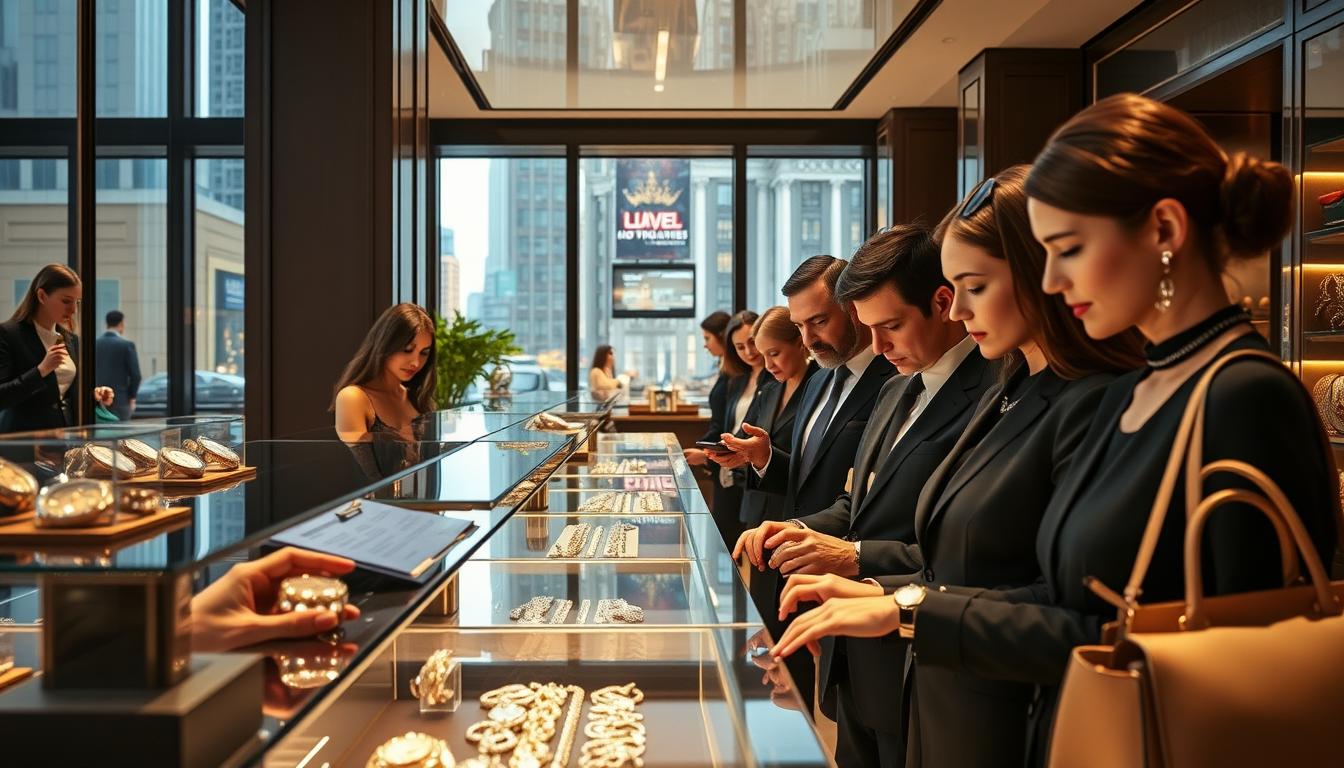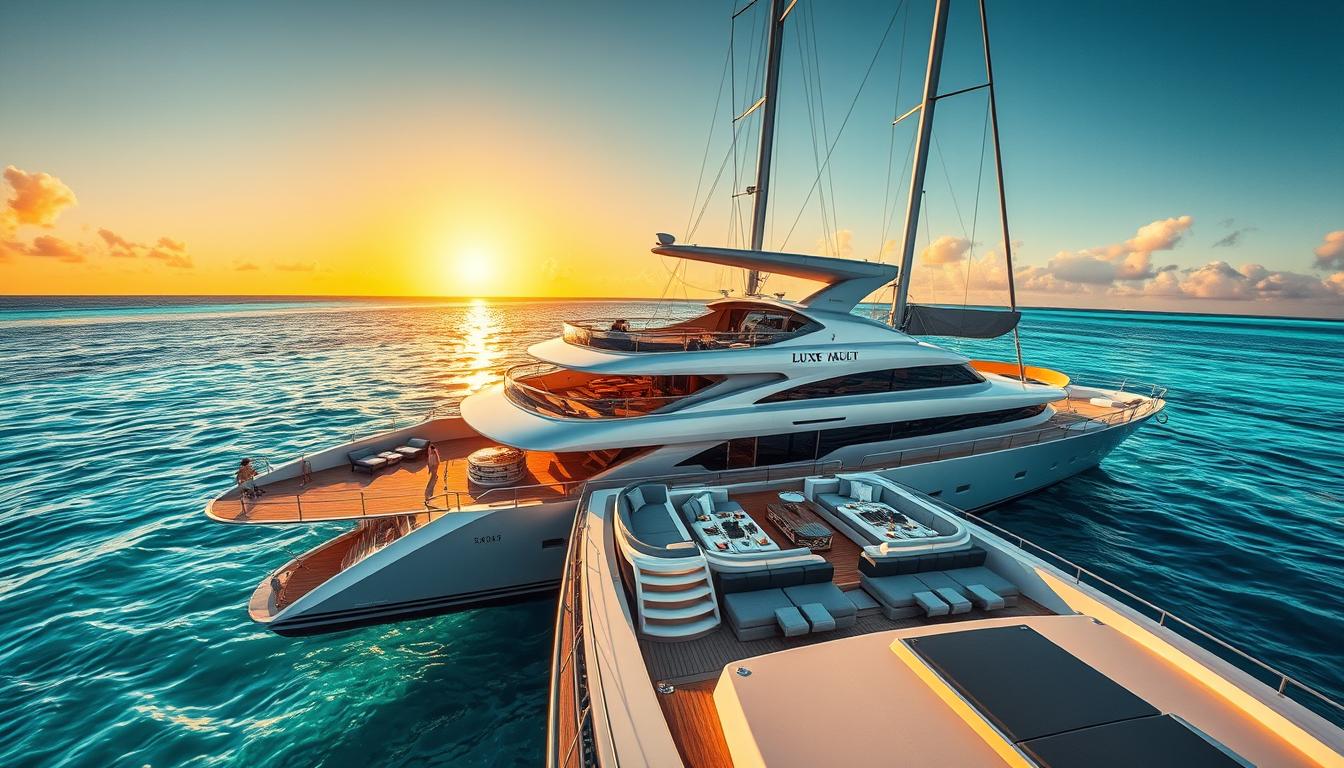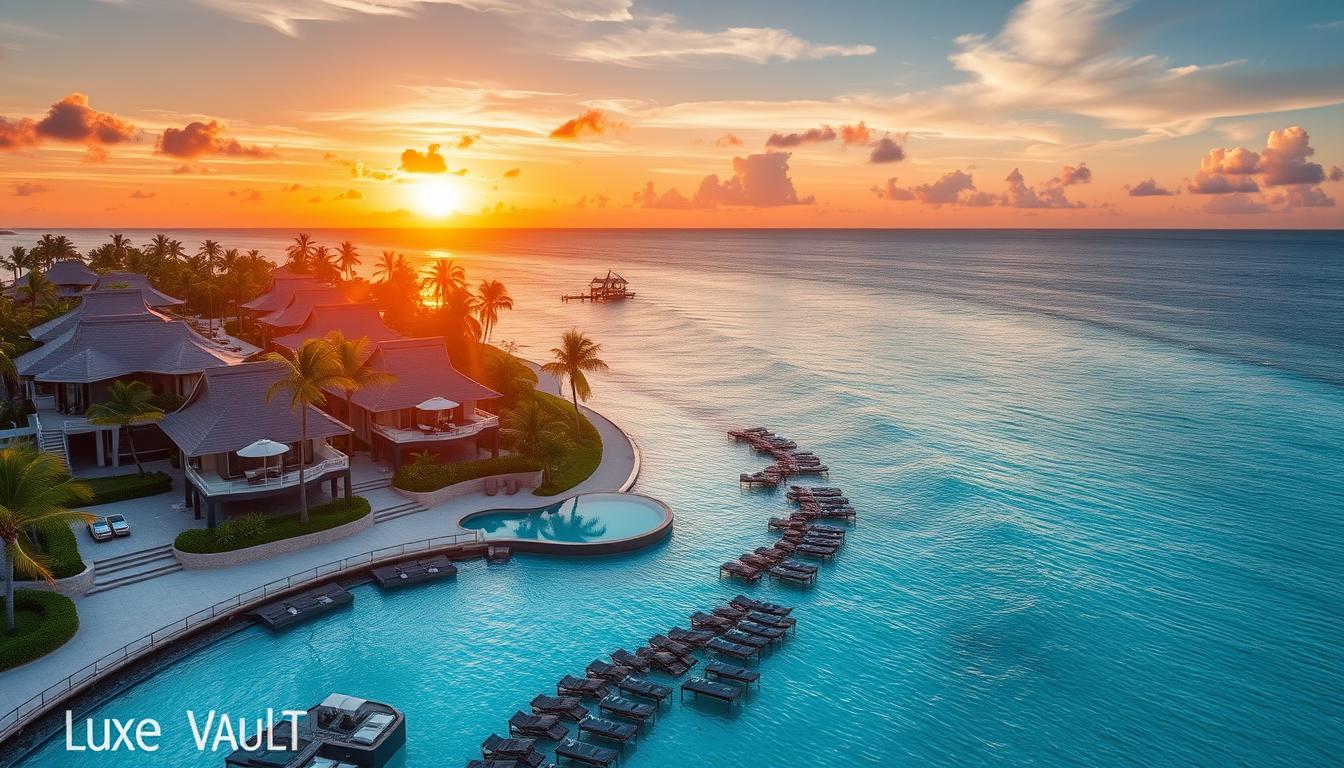When you think about luxury, a big question pops up: what does it take to join the ranks of high-end consumers in today’s market?
The global luxury market was worth €1.48 trillion in 2024. It saw a slight drop, but it’s huge. You might ask, who are the individuals driving this market, and what’s their buying power?
Exploring the global buying power of luxury consumers will give you a peek into who they are. You’ll learn about their demographics and what makes them special.
Key Takeaways
- The global luxury market size and its slight decline in 2024.
- Characteristics of high-end consumers driving the luxury market.
- Insights into the global buying power of luxury consumers.
- Demographic analysis of luxury consumers.
- Trends shaping the luxury market in 2025.
Understanding the Definition of Luxury
The definition of luxury is changing as people’s tastes evolve. Luxury is now linked with top-notch products, special experiences, and rich brand histories. To grasp what luxury means, we must look at today’s trends and how people shop.
Defining Luxury in Today’s Market
In today’s world, luxury means exceptional craftsmanship, high-quality materials, and unique experiences. People want more than just products; they seek special moments that show off their style and status. The rise of online shopping and social media has changed how luxury brands connect with their audience. It’s key for brands to have a strong online presence while staying exclusive.
The Evolution of Luxury Goods
Luxury goods have changed a lot over time. Once, luxury was all about rarity and exclusivity. But as more people want luxury items, brands have had to offer more choices while keeping their high-end image. This shift is due to changing luxury spending trends and luxury purchasing behavior, with a focus on personal touches and eco-friendly choices.
Distinction Between Luxury and Premium Brands
Luxury and premium brands both offer high-quality items, but they differ. Luxury brands are known for their heritage, exclusivity, and craftsmanship. Premium brands, while focusing on high-quality products and advanced features, often lack the historical and exclusive appeal of luxury brands. Knowing these differences helps brands aim for the luxury market.
For businesses aiming at the luxury market, understanding luxury consumption and luxury purchasing behavior is key. By focusing on quality, exclusivity, and personal experiences, brands can meet the changing needs of luxury consumers. If you’re curious about how to adjust your marketing for the luxury sector, reach out to us at raja@cowrit.com for details on our content marketing services.
Current Landscape of High-End Consumer Spending
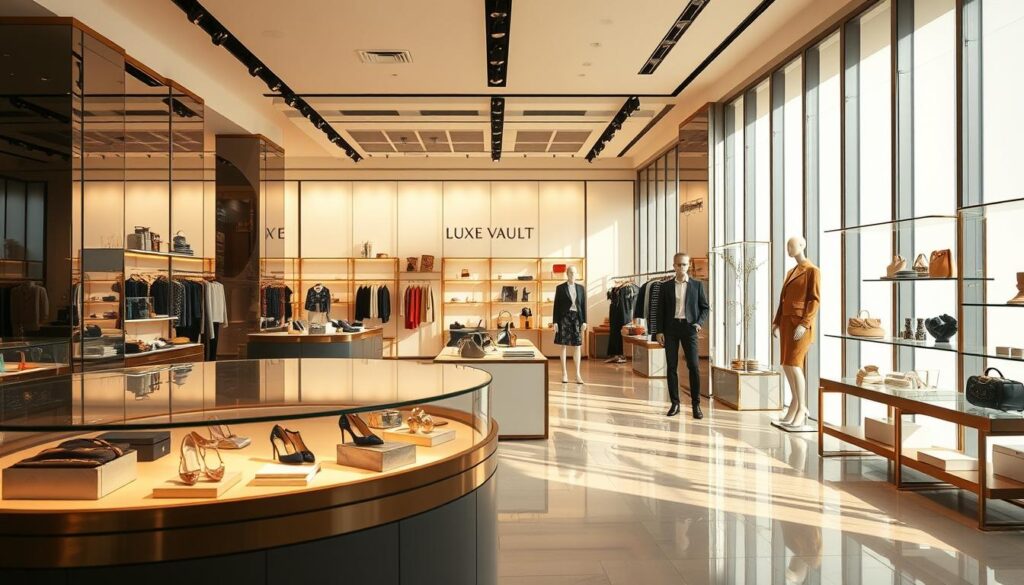
High-end consumer spending is on the rise. Global trends show a strong demand for luxury goods. As a high-end buyer, you’re part of a growing group that’s driving the luxury market forward.
Global Trends in Luxury Spending
The global luxury market is growing fast. This growth is thanks to more high-net-worth individuals wanting luxury goods. Market research says the luxury goods market will keep growing, with global buying power being key.
Luxury spending is now happening in more places. Countries in Asia and Africa are showing big growth. So, luxury brands are changing their strategies to reach these new markets.
Key Markets for Luxury Goods
While Europe and North America are big players, new markets are rising. As a luxury consumer, you’re likely influenced by global trends. You’re looking for sustainable and exclusive products.
- The Asia-Pacific region is expected to drive growth in the luxury market.
- Online channels are becoming increasingly important for luxury brands.
- Sustainability is emerging as a key factor in luxury purchasing decisions.
Insights from Recent Market Research
Recent research shows high-end buyers are looking for unique and personalized experiences. Luxury brands are now focusing on tailored services and exclusive products.
“The luxury market is evolving, with a focus on sustainability, digitalization, and personalized experiences.”
As the luxury market changes, it’s important to understand the luxury market forecast. By knowing global trends and what consumers want, you can make better choices about your luxury purchases.
The Role of Affluence in Luxury Acquisition
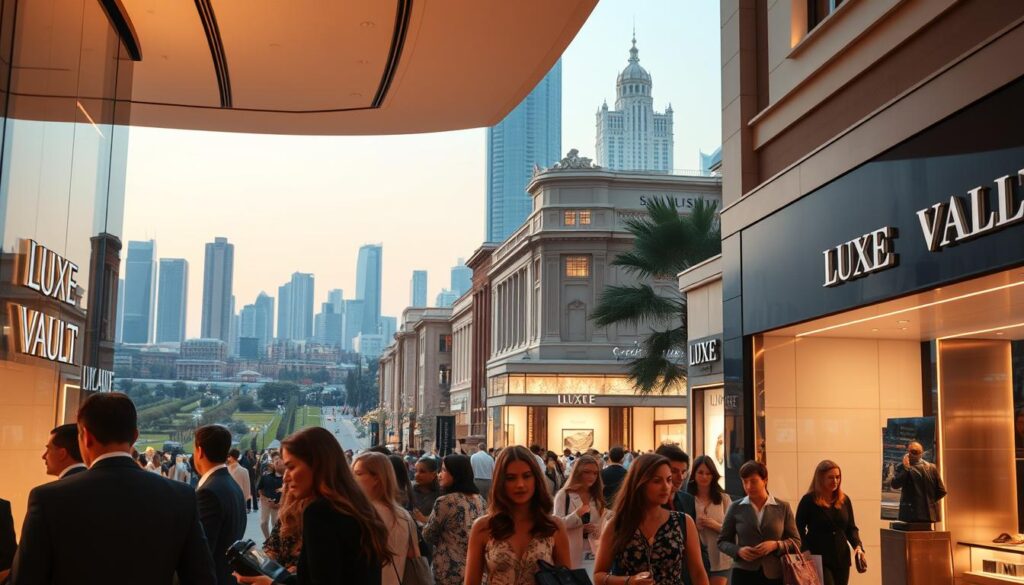
Affluence is key in the luxury market. It affects who can buy luxury goods. People’s wealth decides what they choose to buy.
Demographics of High-End Buyers
High-end buyers have lots of money and can spend it. Affluent shoppers are usually well-educated and older. They live in rich areas or cities.
These buyers are a mix of old money and young tech lovers. The younger ones are changing what luxury means. They want unique, personal experiences.
Income Disparities and Their Impact
Income gaps affect luxury spending. Places with big wealth gaps see more luxury sales. Poorer areas spend less on luxury.
Luxury brands need to reach different people. They offer various items to attract more buyers. This includes those who dream of luxury but can’t afford the very top.
Influence of Net Worth on Luxury Spending
Net worth shapes how people spend on luxury. High-net-worth individuals buy more luxury because they can. They seek quality, exclusivity, and status.
Luxury brands aim to meet these buyers’ needs. They focus on craftsmanship, heritage, and being rare. This keeps their appeal strong.
The Influence of Generational Wealth
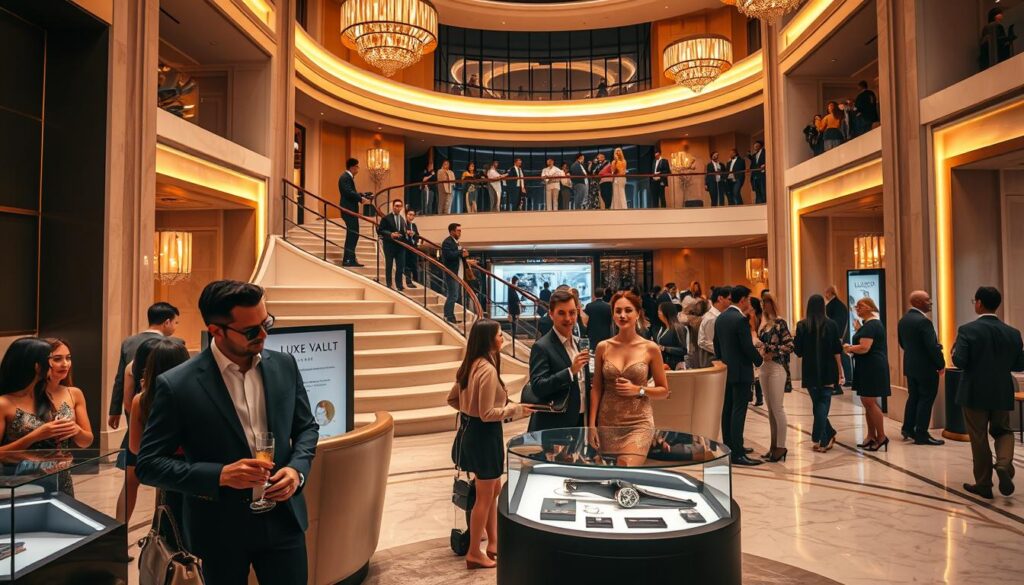
Generational wealth is changing the luxury world. Millennials and Gen Z are leading this change. Their spending habits and preferences are greatly affecting the luxury market.
Wealth Transfer and Its Effect on Luxury Market
Wealth is moving from one generation to the next, shaping the luxury market. Baby boomers passing on their wealth means younger people can now afford luxury goods and experiences.
Key statistics on wealth transfer:
| Year | Wealth Transfer (in trillion USD) | Expected Luxury Spending Growth |
|---|---|---|
| 2025 | 30 | 10% |
| 2030 | 50 | 15% |
| 2035 | 70 | 20% |
Millennial and Gen Z Perspectives on Luxury
Millennials and Gen Z see luxury differently. For them, it’s not just about owning things. It’s about the experiences and stories behind them.
“Luxury is not just about the product; it’s about the story behind it, the craftsmanship, and the brand’s commitment to sustainability.” This view is shaping how luxury brands market and sell their products.
Changing Values Around Wealth and Spending
Younger generations are changing how we spend on luxury. They value sustainability, ethical production, and unique experiences.
Understanding global buying power means looking at values and preferences, not just money spent.
For more insights on luxury market trends and consumer behavior, feel free to contact us at raja@cowrit.com for content marketing and digital marketing services.
The Impact of Social Media on Luxury Shopping
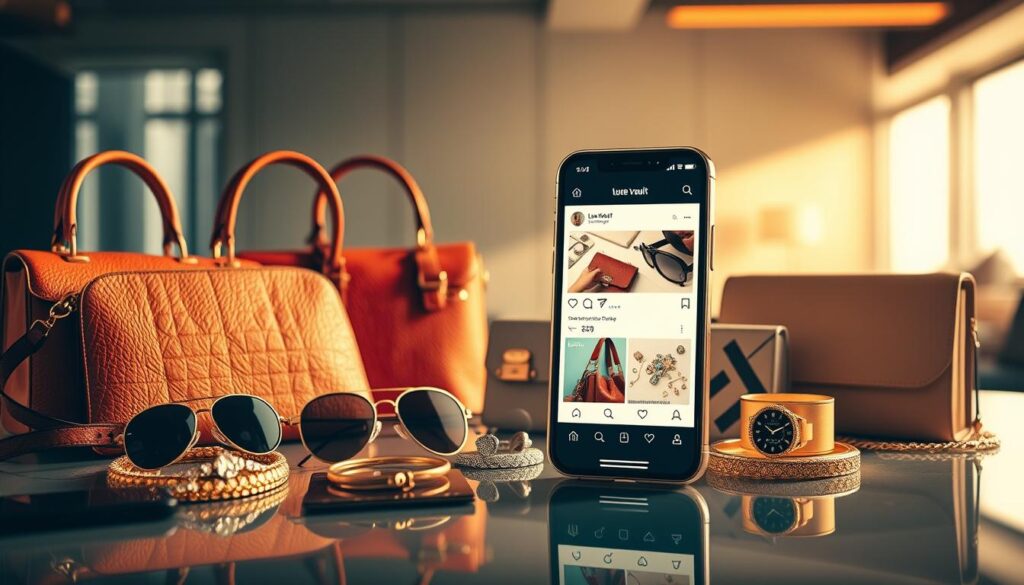
Social media is changing how we shop for luxury items. It’s all about influencer marketing and online stores. Luxury brands use social media to connect with people, grow their brand, and sell more.
Influencers Shaping Luxury Purchases
Influencers are big in shaping what we buy. They show off luxury goods in their lives, making us want them too. A survey found that 71% of consumers are more likely to buy something if they see it on social media.
“Influencer marketing has become a key strategy for luxury brands to reach new audiences and build credibility.”
The Role of E-Commerce in Luxury
E-commerce has changed how we buy luxury goods. Now, we can shop online from home. Luxury brands are spending a lot on their online stores. By 2025, 40% of luxury sales will be online.
| Year | Luxury E-Commerce Sales | Growth Rate |
|---|---|---|
| 2023 | $50 billion | 15% |
| 2024 | $57.5 billion | 15% |
| 2025 | $66.1 billion | 15% |
Demystifying the Digital Luxury Experience
The digital luxury experience is more than just buying things. It’s about diving into the brand’s world. Luxury brands use social media and online stores to share their stories and connect with customers. As someone who values luxury, you want a special experience. Brands are using tech to give you that.
Want to know more about luxury trends and forecasts? Contact us at raja@cowrit.com to learn about our marketing services.
Luxury Brands’ Strategies to Engage Consumers
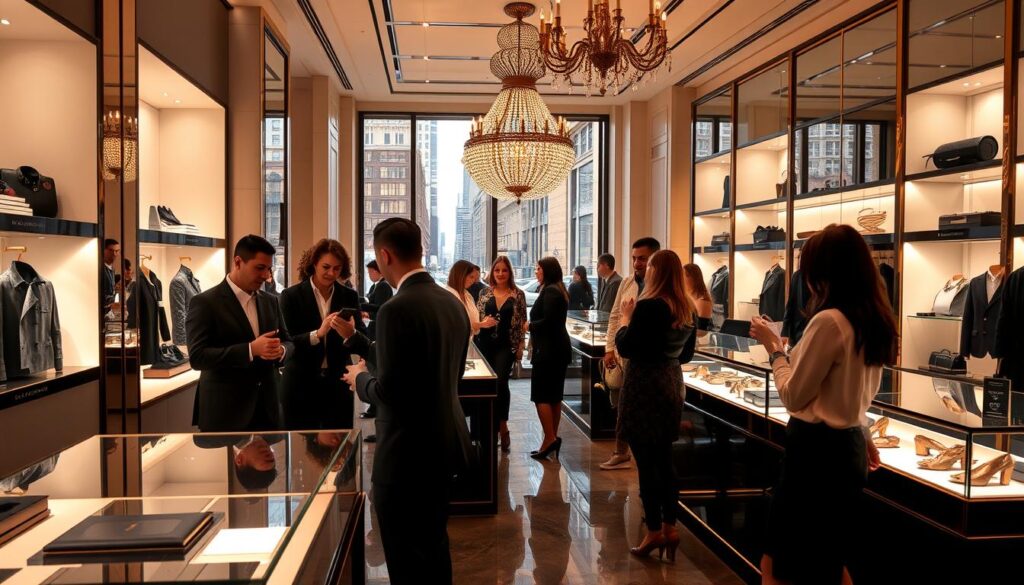
In the world of luxury, brands use special strategies to connect with their high-end customers. It’s key for them to know what these shoppers want. This helps them stay ahead in the luxury market.
Personalization in Marketing Luxury Products
Luxury shoppers want an experience that shows they’re unique. Personalization is a big deal for luxury brands. They make custom products, offer special services, and use data to get to know their customers.
For example, some luxury brands use AI to understand what customers like. Forbes says, “Personalization is now essential for luxury brands to stay relevant.”
Maintaining Exclusivity and Scarcity
Being exclusive is what luxury brands are all about. They keep their products rare to keep their appeal strong. This makes people want them more.
According to a
“Luxury brands that successfully create a sense of exclusivity and scarcity are more likely to attract and retain high-end consumers.”
This approach boosts the brand’s image and makes buyers feel they must act fast.
Collaborations and Limited Editions
Luxury brands are getting creative with collaborations and limited-edition items. These moves excite their fans and draw in new ones who want something special.
For instance, luxury fashion brands team up with famous artists or designers for unique collections. These partnerships create excitement and open doors to new markets.
As the luxury world keeps changing, brands that focus on personalization, exclusivity, and collaborations will thrive. They’ll keep their discerning customers engaged and help the luxury market grow.
Need Content Writing | Content Marketing | Digital Marketing | Social Media Marketing and More services? Contact us at raja@cowrit.com.
Geopolitical Factors Affecting Luxury Buying Power
Geopolitical factors are changing the luxury world, impacting how much people spend. As the world’s economy links more, knowing these factors is key for luxury brands to lead.
Economic Conditions in Key Markets
The state of the economy in major markets greatly affects luxury spending. When the economy grows, people tend to buy more luxury items. But, when it shrinks, they spend less on high-end goods.
Key economic indicators to keep an eye on include GDP growth, job rates, and how confident people feel about spending. These signs show how well an economy is doing and how it might affect luxury spending.
Trade Policies and Tariffs
Trade rules and tariffs also deeply affect luxury spending. Tariffs on luxury imports can make these items pricier, making them harder for people to buy. This might change how people choose to spend their money, with some looking for cheaper luxury options.
- Tariffs can make luxury goods more expensive.
- Trade deals can help move luxury items across borders.
- Protectionist policies can affect how available and priced luxury goods are.
“The imposition of tariffs on luxury goods can significantly alter consumer behavior and impact the overall luxury market.”
Currency Fluctuations and Their Effects
Currency changes are also very important for luxury spending. Volatility in exchange rates can change how much people can buy, mainly for those who shop online or travel abroad.
For example, a strong currency can make foreign luxury items cheaper. But, a weak currency can make them pricier. This might change how people spend, with some choosing to buy in countries with better exchange rates.
Luxury brands need to keep up with these changes to stay competitive. By understanding the mix of economic conditions, trade policies, and currency shifts, brands can adapt and meet the changing needs of their high-end customers.
For more information on our content marketing services, please contact us at raja@cowrit.com.
Emerging Markets: A New Frontier for Luxury
Emerging markets in Asia and Africa are opening up new chances for luxury brands. These areas are growing economically, creating a new class of wealthy buyers. They are eager to buy luxury goods.
Growth Opportunities in Asia and Africa
Economic growth and a growing middle class are driving the rise of these markets. In Asia, countries like China and India are seeing a big jump in luxury spending. This is thanks to more people having money and wanting high-end brands.
Africa is also becoming a key place for luxury shopping, with South Africa leading the way.
Luxury Spending Trends: It’s clear that emerging markets are key for luxury growth. Brands are changing their ways to meet the needs of these new consumers.
The Rising Middle Class and Luxury Access
The growing middle class in these markets is driving luxury demand. As people have more money, they want to buy luxury items. This is creating a big demand for high-end products.
| Region | Luxury Market Growth | Key Drivers |
|---|---|---|
| Asia | 12% annual growth | Increasing affluence, young consumer base |
| Africa | 8% annual growth | Growing middle class, urbanization |
Challenges Facing Emerging Markets
Luxury brands face challenges in these markets, like infrastructure issues and cultural differences. They must find ways to overcome these to succeed.
For brands wanting to enter these markets, understanding local tastes is key. Tailoring strategies to meet these needs can help grow loyalty and success.
If you’re interested in learning more about tapping into global luxury markets or need help with marketing, contact us at raja@cowrit.com.
The Intersection of Sustainability and Luxury
Luxury and sustainability are now closely linked. People want luxury items that are also good for the planet. This shift is making luxury brands rethink their ways to be more eco-friendly.
Sustainable Practices Among Luxury Brands
Luxury brands are starting to use sustainable methods. They’re choosing materials wisely and cutting down on waste. Some even use recycled materials and energy-saving techniques.
Key Sustainable Practices:
- Responsible sourcing of materials
- Reducing waste in production
- Energy-efficient manufacturing
- Use of recycled materials
Brands like Gucci and Stella McCartney are leading the way. They’re making products that are both stylish and eco-friendly.
Consumer Demand for Ethical Luxury
People are becoming more aware of the environment and social issues. This awareness is making them want luxury items that are made ethically. They expect luxury brands to show they care about the planet.
| Consumer Expectation | Luxury Brand Response |
|---|---|
| Ethical sourcing | Transparent supply chains |
| Environmental responsibility | Eco-friendly packaging and production |
| Social accountability | Fair labor practices |
The Future of Eco-Friendly High-End Goods
The future of luxury will be shaped by the need for sustainability. Luxury brands will have to keep up with this trend to stay popular with their customers.
For more information on our content marketing services, you can contact us at raja@cowrit.com.
Evaluating the Future of Luxury Consumption
As we near 2025, the luxury market is set to grow a lot. This growth will come from high-net-worth individuals wanting more. Changes in how people shop, new tech, and shifts in the economy will play big roles.
Predictions for 2025’s Luxury Market
The luxury market forecast for 2025 looks good. Several trends will shape the industry. Online luxury shopping will keep growing, thanks to more people feeling comfortable buying online.
Luxury brands will work hard to improve their online stores. They’ll offer personalized experiences and use social media to connect with customers. Also, more people will want to buy sustainable and ethical luxury items.
Consumer Behavior Trends to Watch
Luxury spending trends are changing. People are valuing experiences more than things. They want unique events and personal services, not just fancy products.
Younger generations, like Millennials and Gen Z, are also changing the market. They prefer digital luxury brands and care about sustainability and ethics.
Long-Term Viability of Current Luxury Models
The future of luxury brands depends on their ability to change with the times. They must innovate and evolve. This could mean using more sustainable practices and improving the customer experience with technology.
For luxury brands to stay ahead, they need to keep up with trends and what customers want. You can get the latest insights by reaching out to experts like those at raja@cowrit.com.
Case Studies of Successful Luxury Brands
Successful luxury brands are using new ways to connect with their customers. By looking at what these leaders do, we can learn a lot about what luxury buyers want and how they act.
Innovative Approaches by Leading Brands
Top luxury brands are focusing on personalized marketing strategies. They use data to make experiences that fit each customer’s taste. This makes customers more engaged and loyal.
They’re also using immersive technologies like virtual reality (VR). For example, some brands let customers try out products in a virtual world. This gives a unique experience.
Lessons from Market Leaders
Market leaders teach us how to keep a brand special and rare. Brands like Chanel and Hermès create limited editions. This boosts demand and makes their luxury value higher.
These brands also fit into the digital world. They use online shopping while keeping the personal service luxury buyers love.
Adaptations to Consumer Preferences
Luxury brands are changing to meet new consumer needs. There’s a big push for sustainable and ethical luxury. Brands are using eco-friendly materials and methods.
Stella McCartney is a leader in sustainable luxury. They use vegan materials and green production. This appeals to younger buyers and boosts the brand’s image.
By studying successful luxury brands, businesses can understand the luxury market better. This helps them meet the changing needs of luxury buyers worldwide.
Conclusion: The Future of Luxury Accessibility
Looking ahead to 2025, the luxury market is set for big changes. These changes come from new consumer habits and tech advancements. As a luxury consumer, your choices will guide the industry’s future.
Key Takeaways
The global buying power of high-end consumers is growing. New markets in Asia and Africa are opening up for luxury brands. It’s important to know who can really afford luxury, as income and demographics play a big role.
Luxury Affordability in 2025
Luxury consumers will keep demanding top-quality goods. They’ll want items that are sustainable and eco-friendly. Brands need to keep up with these values to stay in the game.
You’ll see more personalized ads, special collaborations, and limited-edition products. This is how brands will connect with you.
Actionable Insights
For luxury brands, success comes from knowing their audience well. They need to meet their needs. Using digital marketing, social media, and e-commerce is key to reaching luxury consumers.
Want to learn more about our content marketing services? Contact us at raja@cowrit.com.
